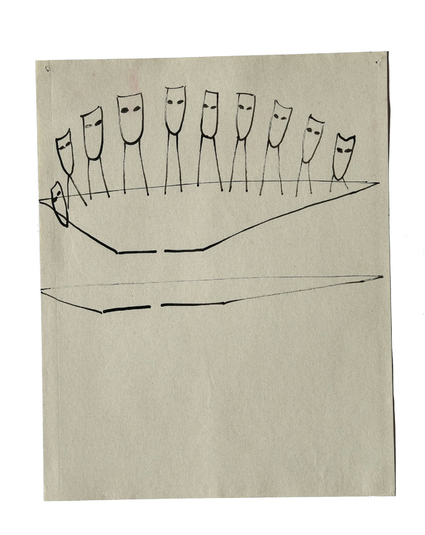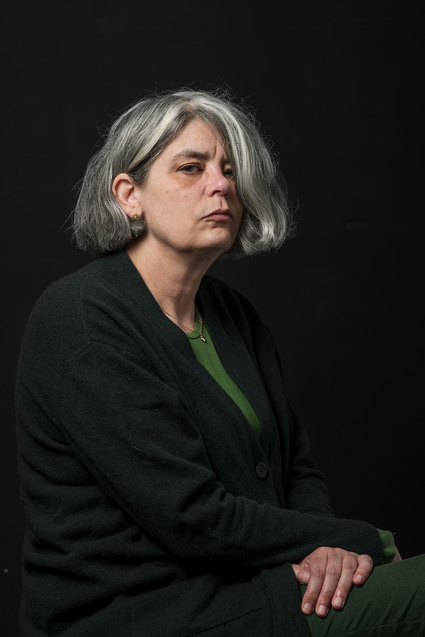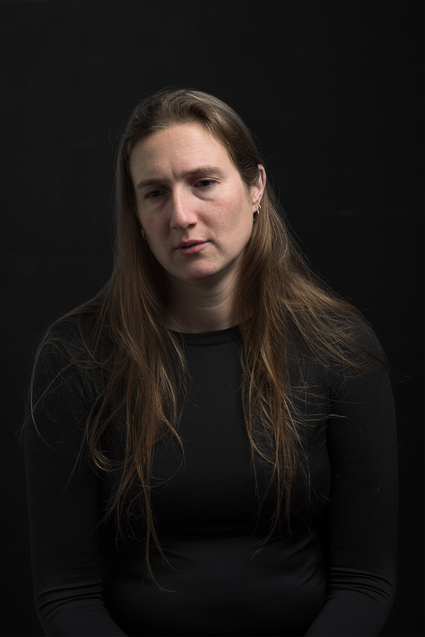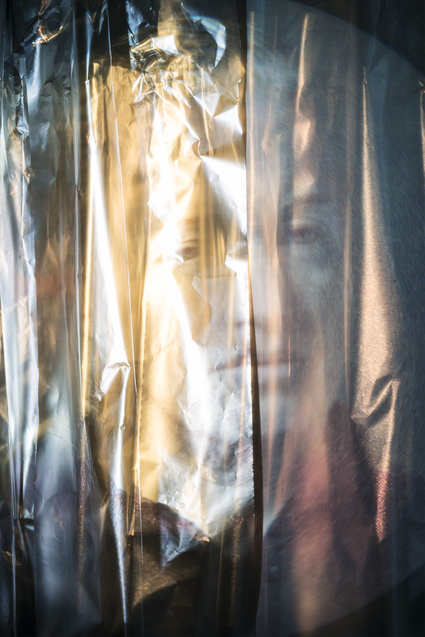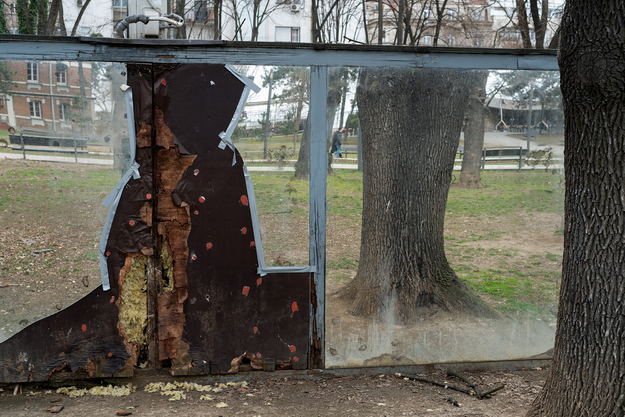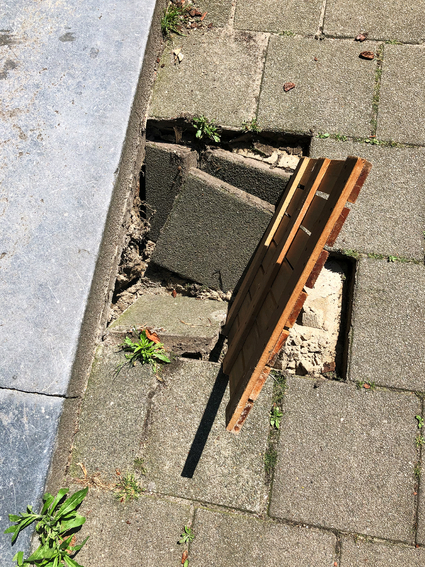what can we learn from old work?
To start off her presentation, Marna showed us a few drawings she made during her time at the Amsterdam University for the Arts in 1996. They are small drawings in ink on recycled paper, mostly of human figures. While she made these drawings long before her diagnosis, she now sees traces of her autism in them: they show people wearing masks, a distance between the self and others, closed doors. Marna shared that she remembers the feeling of distance and alienation which these drawings convey and added that she already had a feeling that there was something different about her, but did not know what it was.
street photography - documenting everyday bewilderment
Marna explained to us that after graduating from the University for the Arts, she put her artistic career on hold for a while and pursued various other jobs. This changed five years ago, when events in her personal life and her new autism diagnosis sent her spiralling into an identity crisis.
“For some people, receiving a diagnosis later in life is a relief, a way to finally understand what is happening to them.“, Marna told us, “But for me it was the opposite.“
Reflecting on what could help her overcome this crisis and be a source of joy in her life, Marna started studying photography, and going for walks in the evening, photographing things that caught her eye. “During this time I was mostly focused on the ground, I didn’t look up much“, she shared.
But even on the ground, she noticed many strange and interesting things that played into her fascination for human behaviour. There were many things that just made her ask: “Why?“
Human behaviour - street photography to capture the strangeness of human behaviour
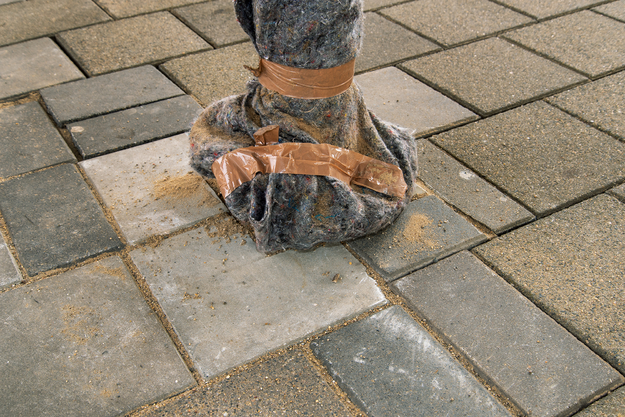
Marna told us that she wanted to capture her bewilderment at people’s strange behaviour from her newly found outsider perspective. “Look at how weird you are!“, these photos are meant to say.
Human behaviour - Street photography to capture the strangeness of human behaviour
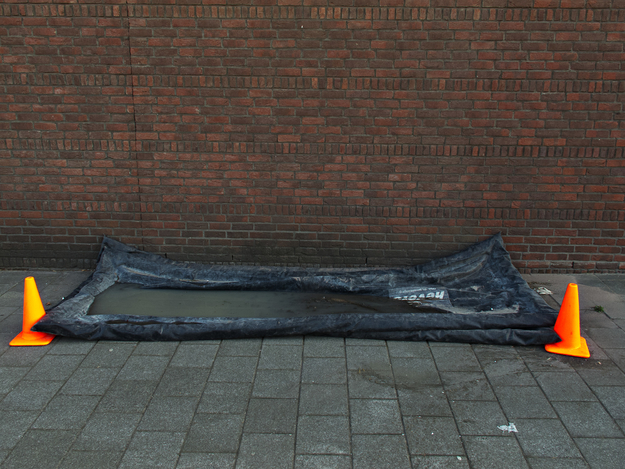
The images from this period of street photography are not completely abstract, but they do have an estranging effect on the viewer. It takes a moment of careful observation to understand what is happening in each picture. Marna discovered that she enjoyed lighting the objects of her photographs from different angles and taking multiple pictures of the same objects, both practices she attributes to her autistic mind.
aan mij is niets te zien
Moving on, Marna told us that around the same time, she joined a talking group for recently diagnosed autistic women. Through getting to know these women and their stories, she got the idea for her portrait series “aan mij is niets te zien“, which roughly translates to “there’s nothing to see on me“. You can not see from the outside if someone has autism, she realised, which makes it difficult for other people to understand their neurodivergent behaviour. By taking portraits of women who received an autism diagnosis later in their lives, she wanted to invite the viewers to reflect on people’s differences, which may not be apparent at first sight.
For the portrait series, Marna invited women who received an autism diagnosis during adulthood. She asked them to wear dark clothes and no makeup, in order to draw the focus to their posture and expression. Another instruction was to not look directly into the camera. This choice had to do with the fact that many people with autism have trouble making eye contact. Later in the process, Marna realised that looking into the camera could also add vulnerability.
Before taking each portrait, Marna sat down for a confidential one-on-one conversation with each of the women to discuss their experiences with autism, often times unearthing heavy and intense emotions. She shared with us that these conversations naturally had an effect on the posture and expressions of the women, which she aimed to capture in her portraits.
In exchange for the intense portrait session, Marna also took regular portraits of the women for LinkedIn or other purposes, for which they could wear their favourite clothes, apply make up, and smile at the camera if they wanted to.
Other artists present in our discussion round remarked that it would be interesting to see these other photos as well, since they might show an interesting contrast. In which situation would the women be masking their autism, and in which situation would they be genuine? Of course, the difference could also be trivial. In any case, Marna agreed that it would be worthwhile to revisit the informal portraits just out of curiosity.
Another artist asked if these portraits, as well as the street photography are, in a sense, self-portraits of Marna’s own confusion. This resulted in a discussion about whether every work could be called a self-portrait, since it is an expression of the artist’s unique point of view. At the same time, this is not necessarily true - artists may also choose to portrait others in order to not have to look at themselves. In any case, Marna agreed that talking to and taking these portraits of other women in a similar situation to her own helped her to better understand herself at the time.
Johan
The next project Marna introduced us to is a book of photographs titled Johan, after a severely autistic man whom she met in her triathlon club. The collection of photos in this book stems from walks that Marna took with Johan, capturing his habits and mannerisms with her camera. For example, one photo shows Johan standing in the middle of a path, seemingly oblivious to a runner passing by. In another series of photos he can be seen picking up plastic waste from the street - to fix the wrongness of seeing garbage on the street, Marna told us.
Perhaps most fascinating is the final photograph in the book, in which Johan can be seen standing at the end of a tunnel. The image is fragmented in a sort of optical illusion, and Johan’s bent posture is mirrored by a tree to his right. The fragmented nature of the photo works as a way of inviting the viewer into Johan’s mind.
Johan - This is the final image from Marna Slappendel's book 'Johan' .
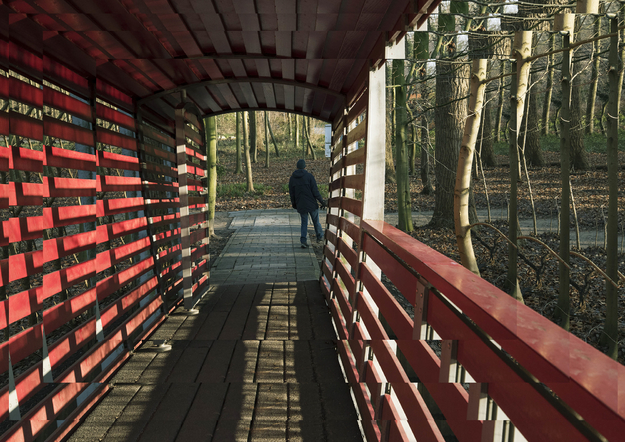
Marna explained to us that at this point, she had already learned a lot about autism and felt confident playing with the concept in her work. This is exactly what she did in her next project, titled “Chameleons“. Autistic women who are diagnosed later in life are sometimes called “chameleons“, because they learn to adapt to mask and disguise themselves to fit into various social situations. To play with this concept, she revisited the “aan mij is niets the zien“ portrait series, copying the photos onto various wrapping papers and materials.
present work: street photography to inspire confusion
Finally, Marna introduced us to her most recent work, which she created during an artist residency in Belgrade. There, she took back to the streets with her camera, again searching for images that encapsulate her bewilderment over human behaviour and trying to share this confusion through her photographs. By playing with angles and perspective, she creates images that momentarily make you lose your understanding of space; puzzle-like photos that do not offer much to hold onto visually. “It’s not only about sharing my own confusion“, Marna said, “but also about inviting the viewer into this state of confusion, into these other ways of looking“ - which, in a more abstract sense, can help them better understand the way neurodiverse people see the world.
discussion: photography versus painting
After her presentation, Marna mentioned that she would also like to practice drawing and painting again. When we asked her why, she replied that drawing to her is much more personal and intimidating. The other artists chimed in to note that painting is much slower than photography, and can easily feel overwhelming because the possibilities for a painting are endless. In order to contain them, you’d have to make up your own rules - but then again, the possibilities for making up rules are also endless. Marna added that photography comes to her easily and is much less emotional, while painting requires much more thought and is often connected to intense emotions.
Another artist suggested that Marna could try drawing or painting some of her own favourite photographs, since many of the photos she showed us already have a painting-like quality.
impatience and perfectionism - an autistic combination?
When asked if she also has physical copies of her work, Marna replied that she does not yet. While she would like to present her work at more exhibitions and is starting to submit it in different places, she feels impatient, since there was a long gap between her attending art school and taking up photography again later in her life.
The other artists noted that impatience and perfectionism are two seemingly conflicting traits which often co-exist in autistic artists. They want their work to be good, and be good now. Someone added that impatience may have to do with overstimulation due to an abundance of choices. When the possibilities are overwhelming, it is easy to become impatient with the process of choosing. At the same time, everything has to be exactly right, which makes the choices much more difficult.
Of course, being able to see an abundance of ideas and possibilities at the same time is also a very positive trait. The challenge is only to choose one idea and trust that your choice will be worth the effort.
